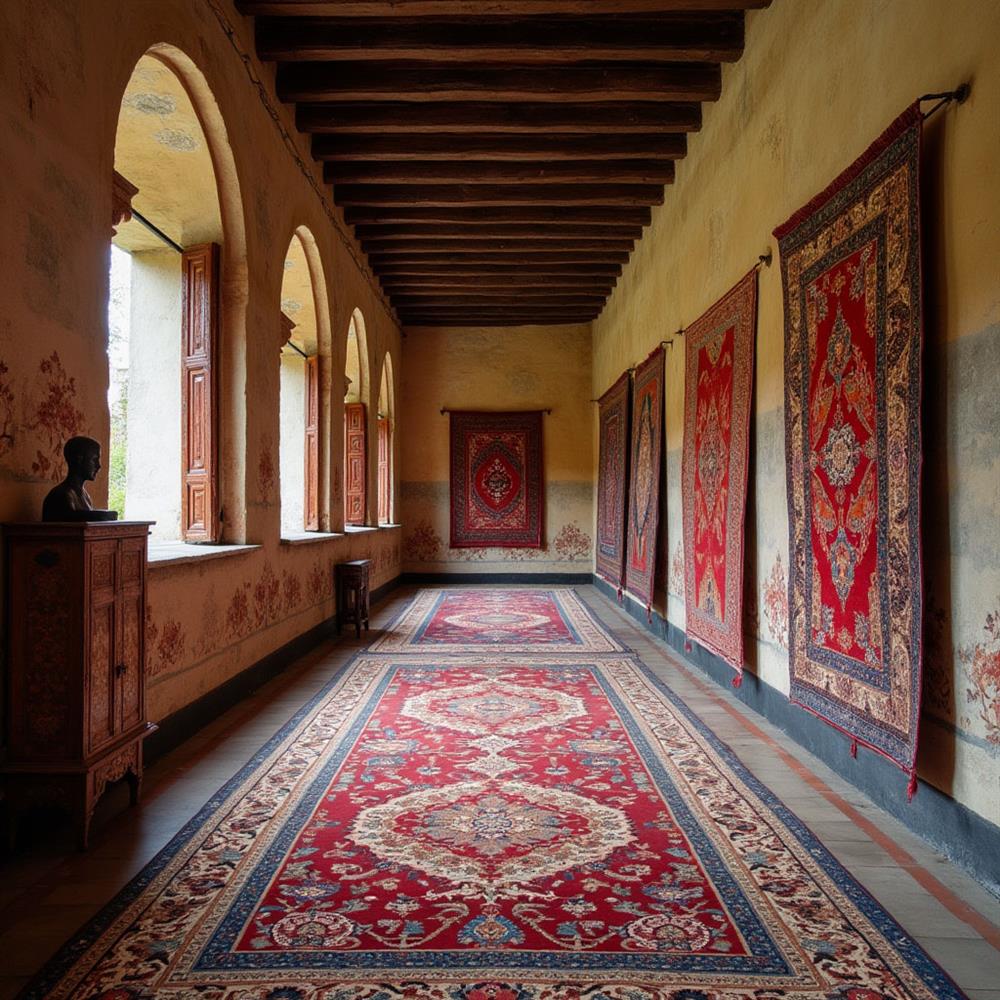Carpet: One of Iran’s Main Export Products
In many parts of the world, our country is known for the carpets it produces. Iranian carpets are also highly popular within the country itself. This is why you can find many counterfeit products in the market attempting to imitate authentic Iranian carpets.
If it is important for you to ensure that you are purchasing a genuine Iranian carpet, stay with us in this article. We will go through key points that help you identify an authentic Iranian carpet.
Factors to Consider When Identifying an Iranian Carpet!
In addition to their long history, Iranian carpets are renowned for their quality. In almost every traditional market, you can find one or more shops specializing in selling authentic Iranian carpets. These carpets have unique features that can help you distinguish them from foreign imitations. Below, we will examine some of the most important of these characteristics.
The Knot Type of Iranian Carpets
The carpet-weaving industry in Iran has a long history, dating back to ancient times. Due to this deep-rooted tradition, the production of authentic Iranian carpets remains faithful to its traditional methods and is still handmade. To distinguish a classic Iranian carpet from a machine-made one, you can examine the knots used in its weaving. Handmade Iranian carpets have stronger and tighter knots compared to machine-made carpets.
Design and Patterns of Iranian Carpets
Although modern-patterned carpets have gained considerable popularity among today's customers, they have yet to secure a prominent place among traditional Iranian carpet producers. This is why the use of classic and historical motifs is often a key characteristic that helps identify an authentic Iranian carpet.
Type of Fibers in Iranian Carpets
As mentioned earlier, traditional Iranian carpet weavers remain committed to their ancestral weaving techniques. This commitment is also reflected in the raw materials they use. A distinguishing factor of Iranian carpets is the type of fibers used, which are typically wool and silk. Furthermore, these wool and silk fibers are often produced through natural processes. However, this factor also contributes to the higher price of Iranian carpets.
Variety of Designs and Colors
Unlike modern carpets, Iranian carpets typically feature intricate patterns and a wide range of colors within a single piece. Carpets that are monochromatic or have minimalistic designs usually do not fall into the category of authentic Iranian carpets. Even if you choose a red Iranian carpet, a closer inspection will likely reveal several other colors woven into its intricate designs.
Product Information on the Back of the Carpet
If you have ever examined the back of a carpet, you may have noticed a label detailing the specifications of the product. Counterfeit carpets often lack accurate information on these labels. The back label of an authentic Iranian carpet typically provides precise details such as weight, knot density, and fiber type. In contrast, fake carpets, which do not adhere to the traditional craftsmanship of Iranian carpet weaving, either omit this information or present it in a vague and unclear manner.
Shedding Level of Iranian Carpets
One of the simplest ways to identify an authentic Iranian carpet is by assessing its shedding level. Counterfeit carpets, often made with lower-quality and cheaper fibers, tend to shed significantly, making them easy to identify. In contrast, genuine Iranian carpets have minimal shedding.
Types of Authentic Iranian Carpets
In addition to the points mentioned above, Iranian carpets, woven by different ethnic groups across various regions of Iran, possess distinct characteristics unique to each area. Being aware of these differences can help you make a more informed decision and become more proficient in identifying authentic Iranian carpets.
Identifying an authentic Iranian (Persian) carpet requires careful examination of several key features, including materials, knotting techniques, designs, and origins. Here’s a guide to help you distinguish a genuine Persian rug:
1. Examine the Knotting Technique
- Hand-knotted vs. Machine-made:
- Persian carpets are hand-knotted with individual knots, while machine-made rugs have uniform, looped stitching.
- Flip the rug over and check the knots—if they are irregular and vary in size, it’s likely handmade.
- Machine-made rugs often have a stiff, plastic-like backing.
- Knot Type:
- Authentic Persian rugs use the Persian (Senneh) knot or the Turkish (Ghiordes) knot.
- If you pull a fiber and it moves independently of others, it is likely hand-knotted.
2. Check the Materials
- Wool: High-quality Persian rugs use soft, hand-spun wool, often dyed with natural dyes.
- Silk: Some Persian rugs, especially from Qom, Isfahan, and Kashan, use silk or silk blends.
- Cotton: The foundation (warp and weft) is often made of cotton in most Persian rugs.
3. Look at the Design & Patterns
- Authentic Persian carpets feature elaborate, symmetrical designs and motifs that vary by region:
- Tabriz: Central medallion designs, floral motifs, and fine detail.
- Isfahan: High-knot density, silk highlights, and classic Persian motifs.
- Qom: Pure silk rugs with intricate patterns.
- Kashan: Floral designs with a central medallion.
- Nain: Light colors, intricate weaving, and very high knot counts.
- Imperfections: Handmade rugs often have slight irregularities in patterns, unlike machine-made rugs that are perfectly symmetrical.
4. Check the Colors & Dyes
- Persian carpets traditionally use natural dyes from plants, insects, and minerals.
- Do a rub test with a damp cloth—if color transfers, it may be a synthetic dye.
- Over time, natural dyes develop a soft patina, while synthetic dyes may fade unnaturally.
5. Examine the Fringe
- Hand-knotted rugs have fringes that are an extension of the warp threads (not sewn or glued
Conclusion
Authentic Iranian (Persian) carpets stand out due to their hand-knotted craftsmanship, high-quality natural materials, intricate designs, and rich cultural heritage. Key indicators of authenticity include irregular knots, natural dyes, handwoven fringes, and regional patterns. By examining these features, you can distinguish a genuine Persian rug from imitations. Always purchase from reputable dealers and, if possible, seek certification to ensure authenticity. Investing in a real Persian carpet means owning a timeless piece of art that increases in value over time.

